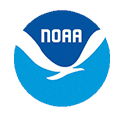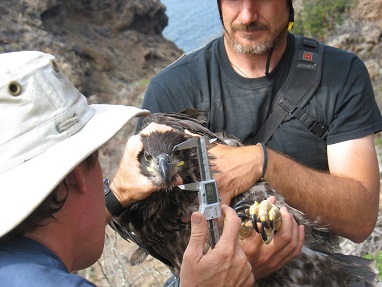Montrose
Hazardous Waste Site | Torrance, California | 1940s to 1970s
What Happened
From the late 1940s to the early 1970s, millions of pounds of DDTdichloro-diphenyl-trichloroethane; chemical compound manufactured for use as a pesticide until it was banned in the U.S. in 1972. DDT remains in the environment for many decades, accumulates in living creatures, and poses health hazards to humans, wildlife, and fish. and PCBspolychlorinated biphenyls; a class of chemicals previously used in manufacturing that remain in the environment for many decades, accumulate in living creatures, and pose health hazards to humans, wildlife, and fish. were discharged into ocean waters off the southern California coast. Most of the DDT originated from the Montrose Chemical Corporation manufacturing plant located in Torrance, California. This site was one of the largest DDT manufacturing plants in the world. The plant released its wastewater through an outfall pipe offshore, and a large amount of DDT settled onto the Palos Verdes Shelf.
Large quantities of PCBs from numerous sources throughout the Los Angeles area were also released into ocean waters through the same wastewater outfall pipe. Decades later, more than 110 tons of DDTs and 11 tons of PCBs remain in sediments on the ocean floor.
What's Happening Now
In 2001, NOAA and other federal and state agencies reached a settlement with the polluters, establishing the Montrose Settlements Restoration Program (MSRP). MSRP restores four main resources that were harmed by these chemicals:
- Fishing and fish habitat
- Bald eagles
- Peregrine falcons
- Seabirds
Through two phases of restoration, the program implemented a comprehensive portfolio of projects to restore fish, wildlife, and their habitats in southern California!
The trusteesGovernment officials acting on behalf of the public when there is injury to, destruction of, loss of, or threat to natural resources. have allocated $25 million of the funds for Phase 1 restoration as outlined in the Phase 1 Restoration Plan/Environmental Impact Statement. The funds were allocated among four restoraiton categories:
fishing and fish habitat, bald easgles, peregine falcons, and seabirds as follows:
- $12 million for fishing and fish habitat restoration actions
- $13 million for bald eagle, peregine falcon, and seabird restoration actions
In the Phase II Restoration Plan, the Trustees allocated the remaining funds to these project categories:
- $9 million Fish and Fish Habitat Restoration
- $3.5 million Bald Eagle and Peregrine Falcon Restoration
- $5 million Seabird Restoration
Since the completion of the Montrose Settlements Restoration Program (MSRP) Phase I and Phase II Restoration plans; the program has implemented a comprehensive portfolio of restoration projects.
Fish and Fish Habitat Restoration
The Program recently completed the Palos Verdes Rocky Reef Restoration Project. The Program designed this project to restore the lost reef habitat. The reefs will support a diversity of fish and marine life and promote the growth of kelp forest.
The Rocky Reef Project restored approximately 40 acres of subtidal rocky reef habitat to compensate for fish habitat loss. The project involved the placement of 70,300 tons of quarry rock on 40 acres of ocean bottom near the city of Rancho Palos Verdes—an area that once supported low-relief rocky reef habitat impaired by coastal landslides that buried the reef with a thin layer of sediment. The constructed reef will be higher relief, resistant to burial, and support a high diversity of marine resources.
This project is the result of over a decade of planning, permitting, baseline monitoring, and public review and comment. The project was funded by the Montrose Phase II Restoration Plan with additional funds from the State of California. The project’s major non-federal partner—The Southern California Marine Science Institute, led by Dr. Dan Pondella—was a major contributor to the project’s success. Monitoring will be conducted for three years with settlement funds, however the project partners are actively seeking grant funds for additional monitoring.
The Kelp Restoration Project was completed in 2020. The goal of the Project was to reduce the abundance of urchins from areas along the Palos Verdes Shelf. Removing urchins help kelp plants grow and establish in these areas over time. The restoration project restored more than 55 acres by removing more than 4.24 million purple urchins.
The Program also funded restoration in parts of Talbert and Brookhurst Marshes within the Huntington Beach Wetlands system. Completed in 2009, this project opened up approximately 140 acres of wetland habitat to full-tidal flow. These wetlands play an important role as nursery and foraging habitat for many fish and bird species.
Additionally, MSRP collaborated with California State University Long Beach and the Huntington Beach Wetlands Conservancy to complete a two-year study to observe how halibut are using the restored wetlands. Initial studies confirm that juvenile halibut are growing and are using the restored wetlands as a nursery, and adult halibut are shown entering the wetlands to forage on smaller fish.
Bald Eagle and Peregrine Falcon Restoration
A landmark project is the re-establishment of breeding bald eagles to the Channel Islands in Channel Islands National Park. Historically, bald eagles nested and lived among all of the Channel Islands, but by the early 1960s they disappeared from the islands due to human impacts, including the introduction of DDT. To help rebuild a self-sustaining population of bald eagles, from 2002 to 2006, MSRP partnered with the Institute for Wildlife Studies to release 61 juvenile bald eagles on Santa Cruz Island. Since their release, the eagles have spread out among the Channel Islands and biologists have documented nesting on Santa Cruz, Santa Rosa, Anacapa, Santa Catalina, and San Clemente Islands.
Peregrine Falcon Monitoring
Peregrine Falcons were eliminated from the Channel Islands by the mid-1950s, largely due to DDT contamination that led to eggshell-thinning and reproductive failure. The Peregrine Falcon Monitoring Project conducted four comprehensive monitoring efforts on the Channel Islands to document the location and breeding success of Falcons. In addition, eggshell fragments, and addled (dead or infertile) eggs were collected for contaminant analysis. The goal of this project was to monitor the recovery of Peregrine Falcons on the Channel Islands.
Seabird Restoration
Several seabird habitat restoration projects occurred on the Channel Islands and islands off the coast of Baja California, Mexico. Seabirds were impacted by human activities on the islands, including the introduction of non-native plants, feral cats, and other changes. These projects improved seabird nesting habitat through the removal of invasive plants and reintroduction of native species, attracting seabirds to the restored sites, and removing invasive predators and non-natives animals from islands.
Storymaps
View the Montrose Settlements Restoration Program Collection created in 2024. The collection of storymaps will take you through the history of insecticides and the disposal of DDT and PCBS in the Southern California Bight. It also highlights the impressive work being done to restore the resources that were affected.
“The most rewarding experience to me is seeing the restoration concepts we developed during the writing of the MSRP Restoration Plan evolve into full-fledged projects that are making measurable impacts. I will never forget that day we first saw a little Bald Eagle chick in the nest at Pelican Harbor on the webcam—seeing the pair of eagles on Santa Cruz Island hatching a chick without human intervention was the moment I knew we were making a real impact.”Jennifer BoyceMSRP Program Manager
Contacts
Jennifer Boyce
Seabird Biologist
NOAA Restoration Center
(562) 980-4086







